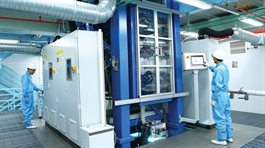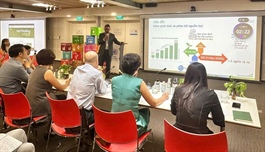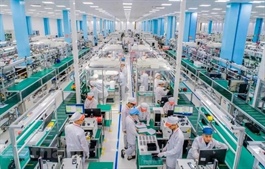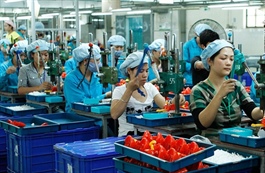GDP eases to 6.6 per cent in 2025: World Bank
GDP eases to 6.6 per cent in 2025: World Bank
After strong momentum in the first half of 2025, Việt Nam’s economy is expected to slow during the remaining months of 2025 as overall export growth likely returns to rates seen in more stable periods.
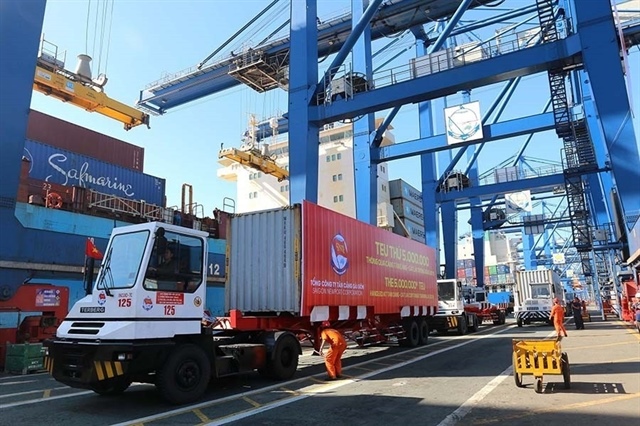
Containers being loaded at the Tân Cảng-Cát Lái Port in HCM City. VNA/VNS Photo |
The World Bank (WB) released its 'Taking Stock – Vietnam Economic Update, September 2025' in Hà Nội, forecasting that GDP growth will ease to 6.6 per cent in 2025 and 6.1 per cent in 2026 as the downturn in global trade begins to bite and export growth slows.
The WB stated that the country’s GDP grew by 7.5 per cent in the first half of 2025, thanks to strong exports, as firms accelerated orders amid uncertainty over global trade policies. Investment growth at constant prices reached 8 per cent, supported by resilient foreign investment and faster public investment disbursement. Final consumption rose by 8 per cent on the back of a tourism rebound.
Citing data for the first six months, exports increased by 14.2 per cent year on year, with shipments to the United States surging 28.3 per cent. Imports also rose by 16 per cent in H1 to meet higher orders during the export push. The WB expects this rapid export growth to moderate.
“New export orders showed signs of improvement in July 2025 after the Việt Nam–United States trade agreement was announced, but they remain in low territory. As the United States is Việt Nam’s leading export market, the country is highly exposed to these developments,” the report says.
According to WB experts, global economic activity is set to slow from 2.8 per cent in 2024 to 2.3 per cent and 2.4 per cent in 2025 and 2026, respectively (down 0.4 and 0.3 percentage points from the January 2025 forecast). The reasons are weaker global trade growth and prolonged geopolitical tensions.
The United States and China, Việt Nam’s largest trading partners, are both expected to decelerate in the second half of this year, further limiting demand for Vietnamese products.
In addition, rising policy uncertainty is weighing negatively on investor and consumer confidence.
For export-oriented economies like Việt Nam, these trends readily affect growth, with Việt Nam’s GDP growth projected at 6.6 per cent in 2025.
“After strong momentum in the first half of 2025, Việt Nam’s economy is expected to slow during the remaining months of 2025 as overall export growth likely returns to rates seen in more stable periods,” the report says.
The report stresses that the baseline forecast assumes a smaller net-export contribution to GDP growth. However, the outlook will depend heavily on how trade conditions evolve.
Looking further ahead, the WB projects GDP growth of 6.1 per cent in 2026 as the global trade slowdown filters through, then a recovery to 6.5 per cent in 2027 as world trade improves and Việt Nam continues to compete effectively in global value chains.
Speaking at the report launch, Mariam Sherman, the WB Country Director for Việt Nam, emphasised that the outlook remained uncertain and would depend on global trade developments. Current momentum should not be taken for granted and could weaken if global headwinds and trade disruptions materialise.
These uncertainties underscored the need for prudence and flexibility in policymaking to find the right course in a changing economic environment.
Experts suggest that, to sustain and enhance growth, Việt Nam can continue to position itself as an attractive destination for global businesses. At the same time, supporting domestic activities and services will become increasingly important to bolster growth against external risks.
“Expanding high-quality public investment can play a role here. By creating an enabling environment for business and encouraging private consumption, Việt Nam can build resilience and secure a sustainable economic future,” one expert suggested.
- 14:44 08/09/2025





